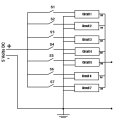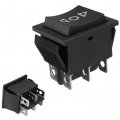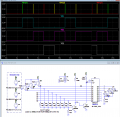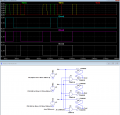Good Day,
I have searched about this on google and found no solution. I am looking for advice in this circuit. I have 7 PWM generator circuits and I wish to switch them ON and OFF manually as and when I wish. Switches S1 to S7 are manual. But incase more than one switch is pushed on accidentally then I want no supply going to the circuits 1 to 7 so that there is only one PWM output at a time and when there is more than one it is avoided.

Is it possible to provide this interlock in the circuit.
Thanks.
I have searched about this on google and found no solution. I am looking for advice in this circuit. I have 7 PWM generator circuits and I wish to switch them ON and OFF manually as and when I wish. Switches S1 to S7 are manual. But incase more than one switch is pushed on accidentally then I want no supply going to the circuits 1 to 7 so that there is only one PWM output at a time and when there is more than one it is avoided.

Is it possible to provide this interlock in the circuit.
Thanks.











